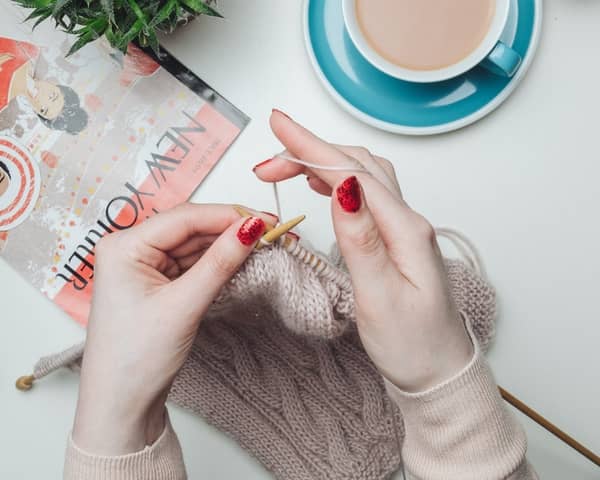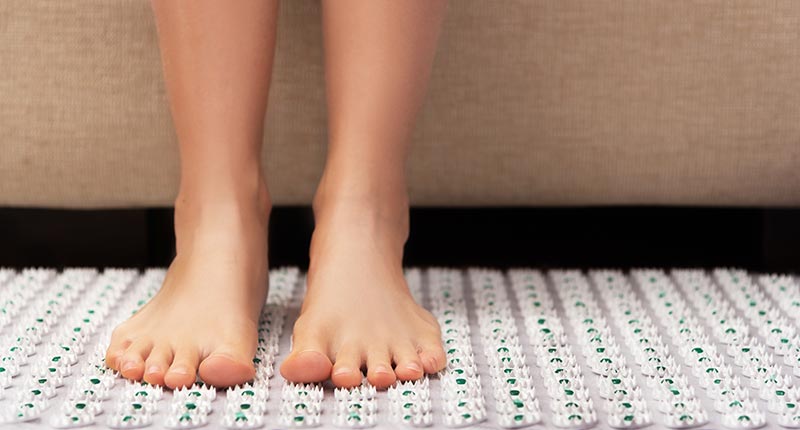Hand pain can be debilitating and get in the way of even the simplest normal life functions. Many people find relief in the form of oral pain medications or wait weeks to seek professional medical care. These may be effective treatments for some individuals, but when you want fast and easily accessible relief from hand and wrist pain, acupuncture for hand pain is the ideal solution.
If you are seeking pain relief in your hands and wrists through oriental medicine, then wrist and hand pain acupressure is worth looking into. The solution to your discomfort is within reach with these hand pain acupressure points.
Does Acupuncture Work For Hand Pain?
Because the hands and wrists are so complex and constantly in motion, there are a number of reasons they can become painful. The most common causes often include carpal tunnel, discomfort from repetitive movements, or physical damage.
Acupuncture for hand pain works by stimulating blood flow to points of focus which improves healing and can reduce pain through nerve stimulation. Acupuncture and acupressure have been used for hand pain for hundreds of years and are still used today. Acupressure for carpal tunnel and acupressure points for wrist pain are just a few of the points you can use to relieve hand pain, but more will be listed below.
Can Acupuncture Help Hand Pain?

The research that has been done on acupressure for hand pain still requires expansion, but it currently suggests an effective method for managing hand pain short term. It has also been observed to support functional improvements in hand mobility in certain cases, making acupuncture for hand pain a notable option for treatment.
Does Acupuncture Heal Or Just Relieve Pain?
Depending on the source of the pain, acupuncture success for hand pain may very. Some studies have shown promising and lasting results while others raise concern for placebo effects, and more still may only provide short-term relief.
Depending on your condition and how often you treat it, acupressure may heal, relieve pain, do both, or do neither in severe cases.
Why Does My Hand Hurt After Acupuncture?
Sometimes, acupuncture for hand pain can actually result in more hand pain, but this isn’t always a bad thing. Risks for adverse effects related to acupressure are relatively low, making this a safe and easy alternative to western medicine. Since acupressure doesn’t puncture the skin, risks are very low, but applying too much pressure to a damaged area of the wrist or hand can be harmful.
When practicing acupressure for hand pain, be firm but aware of what you feel and be gentle with your body. Most commonly, your hand may feel more sensation, feel warm, or seem sore after acupressure because you have stimulated nerves and drawn more blood to that area.
Acupoint: LI-5 (Other Names: Large Intestine-5/Yang Xi/Yang Stream)

The wrist is a complex joint packed with tendons, nerves, and many other moving parts. LI-5 is an acupressure point right in the middle of this highly mobile area of the body, and as such, it is equipped to assist with any discomfort or weakness you feel in your wrist.
Locating LI-5 starts with facing the thumb upwards with an open but relaxed hand. This point falls right at the crease created where the base of the thumb meets the wrist. When you apply pressure in this location, the thumb you are applying pressure with should naturally fall into a soft spot between tendons extending from your wrist to your arm.
LI-5 is surrounded by bones and tendons, so apply pressure with care. It is helpful to rub small circles over this point of acupressure for hand pain as this relaxes the area. LI-5 is also considered to be one of the acupressure points to stay awake as it enhances blood flow.
Acupoint: LU-6 (Other Names: Lung-6/Kong Zui/Maximum Opening)

Using an acupressure point on the lung channel for hand and wrist pain may seem odd at first, but after you try it, you will understand why it is included in this master list of DIY acupressure for hand pain. Aside from treating conditions like respiratory complications, sore throat, and even being a common point of acupressure for bowel inflammation, LU-6 also relieves pain in the arms. This relief can extend all the way to the wrists and hands, especially if the source of your pain is related to tendons that extend from the hand into the arm.
If your palm is facing up, you will find LU-6 on the inside of your arm. It is a perfect midpoint between the crease of the inner elbow and the crease of the wrist. However, it does fall more towards the outer part of the arm. You may feel a tingling sensation when this acupoint is stimulated, and if you do, continue to gently stimulate it for one to two minutes.
Acupoint: LI-4 (Other Names: Large Intestine-4/He Gu/Joining Valley)

LI-4 is a major point for pain relief in the body that connects directly to the brain. While its healing properties can extend to various places in the body, it is also directly helpful for wrist and hand pain acupuncture. This point is known to relieve pain by dispelling stagnant energy, which is why it is also a useful point for childbirth and is commonly noted in acupressure points for skin inflammation.
If you make a “C” shape with both hands, they should easily interlock. The thumb of one hand should fall onto the area of skin between the thumb and index finger of the other hand. This space holds the LI-4 point, and it falls closer to the midpoint of the index finger metacarpal bone, also known as the second metacarpal bone. This area should feel firm, but you shouldn’t be pressing directly on the bone.
Be sure to stimulate this point on both hands! It is suspected that the left hand stimulates the right side of the brain and vice versa, so to reap all the benefits of this point, you will want to treat both sides.
Acupoint: LU-10 (Other Names: Lung-10/Yu Ji/Fish Border)

LU-10 sits on the lung meridian towards the middle of the metacarpal for each thumb. It lies on the seam or light variation in skin tone created where the skin of your palm meets the skin of your outer hand.
This point is commonly used in acupressure for the heart, but it is also great for treating tenosynovitis. The acupressure point falls close to the thumbs tendon, which can become painful with age, damage, or overuse. Massage this point with gentle pressure for relief and to improve blood flow to help any damage in the area heal. Much like LI-4, you may even feel relief due to an endorphin release that can be triggered by stimulating this point.
Acupoint: PC-7 (Other Names: Pericardium-7/Da Ling/Great Mound)

Pericardium-7 is an acupressure point best known as one of a few acupressure points for heart attacks. Despite its close relationship to the heart, it can also help your hands. This point has a focus on hand and wrist numbness, and it can even help with twitchy or restless fingers. Some people even report a boost in mood after activating this point, as it stimulates the nervous system in a positive way.
PC-7 is rather easy to locate if you turn your palm up, make a slight fist, and bend your wrist up. This causes two of the central tendons in your arm to become visible, and the PC-7 point falls directly between those two tendons at the crease of your wrist. Apply gentle pressure at this point for up to 5 minutes, and be sure to activate both hands for best results.
 P. Sze
P. Sze 
















